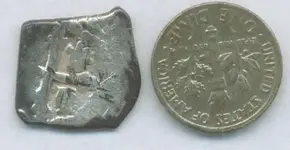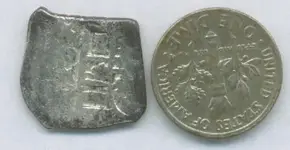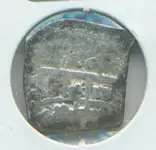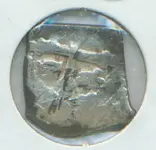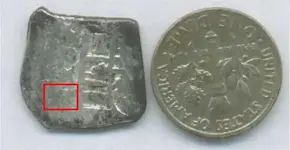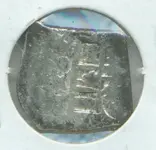You can tell it's Mexico mint immediately from the distinctive cross style... Shield design (not monogram), so it's larger than the 1/2 Real denomination... Properly proportioned detail on a dime-sized planchet, so it has to be 1 Real. The shield has the central triple fleur-de-lis Bourbon escutcheon, so we know it's Philip V (1R coins dated 1701 and up). Looking at some more specific diagnostic points on the shield, this piece can be narrowed with certainty to 1712-14. For those of you who are already versed on the shield design:
-- Granada pomegranate has been removed, but the sliver of the SE castle quadrant is still visible
-- the Low Countries' diagonal lines have been stretched to their outer border; no longer contained within a 2nd inner border
-- Austria bar still stretches from border to border... hasn't yet been shortened
Beyond that, a bit of the date area is faintly visible, and I believe that's actually "14" of a 1714 date there (the dates are located in the encircling legend WNW of the shield... most of which usually never made it onto the planchet)... Possible that could be an optical illusion (as that area is weak/crude), but the more I look at it, I'm somewhat confident that's what it is (the positioning backs this up).
The Mº mintmark, BTW, is to the immediate left of the shield. Just below the mintmark is the assayer initial, which based on the style as discussed above, has to be "J"... you can see a bit of the top line of the "J" on yours.
This appears to be a land find, yes? Coincidental, b/c it's an absolutely typical date for pieces from the 1715 Fleet, which is where a large portion of the extant pieces from this period have come from.



